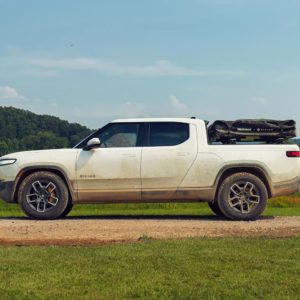A vehicle roof rack is a great addition to your ride if you want extra space to stack some luggage. That being said, it’s important to keep track of the roof load capacity and make sure you’re not overloading the roof rack. An overloaded roof rack can seriously damage your vehicle if it rips off the roof, and accidents can follow if the luggage spills out in the middle of a busy street. Let’s take a look at the different types of roof load capacities, why they’re important, and how to calculate them.
Why Is Roof Load Capacity Important?
When hoisting something on a vehicle’s roof, it’s inevitable that the way it’s attached, its weight, and other factors will affect the vehicle’s handling and performance. This added weight, all on top of the vehicle’s body, can throw the vehicle off-balance thanks to how it shifts the vehicle’s center of gravity higher. This isn’t even mentioning how it interferes with the vehicle’s aerodynamics. Stopping suddenly with a top-heavy load can impede braking and, in extreme cases, tip over the entire vehicle.
That’s why roof load limits exist. Staying within the limit means that while adding extra weight on top of your vehicle will still affect its performance, it won’t be unsafe to drive. Your vehicle owner’s manual should have this handy information ready for you, and you should familiarize yourself with your vehicle’s dynamic and static roof load capacities before adding anything to its top.
Keep in mind that you need to subtract the weight of roof racks and other added accessories when calculating how much weight capacity you have to work with for your luggage and other items. If your vehicle’s roof weight capacity is 200 pounds and you attach a 30-pound roof rack, you can only load up to 170 pounds on top.
What Is Dynamic Roof Load Capacity?
Your vehicle’s dynamic roof load capacity indicates how much weight its roof can carry while in motion, hence the term “dynamic.” It’s also called the roof’s dynamic weight capacity (DWC). Vehicle manufacturers determine this number themselves and include it in their vehicle manuals. This is so vehicle owners know how much weight they can load onto their vehicle roofs without compromising safety while driving. The roof’s DWC is always going to be lower than its static weight capacity (SWC) because SWC doesn’t need to account for the shifting weight while the vehicle’s in motion.
What Is Static Roof Load Capacity?
A vehicle’s static roof load capacity, also known as the roof’s static weight capacity, indicates how much a vehicle’s roof can carry while stationary. The roof’s SWC is typically around three to six times higher than its DWC. This means you can place more weight on the roof while the vehicle is parked.
But why is this important? Well, if you have a car roof tent that uses up the entirety of the roof’s DWC, you can still sleep in the tent while parked without worries. You can even bring items in with you as long as the combined weight doesn’t exceed the roof’s SWC. Likewise, if you’d rather store heavy things on top of your car while camping to provide more room in the cabin for sleeping, you can do so. Just be sure that when you set off again, the weight of the items on your roof fall within the DWC.
Accounting for Load Ratings
Other than your vehicle’s roof load capacity, you should also consider your gear’s various load ratings. Crossbars, mounting systems, and carrying accessories all have load ratings separate from your roof’s DWC and SWC. These load ratings indicate how much weight each accessory can safely carry.
It’s best to follow the weakest link approach when figuring out how much weight to pile onto the roof. Let’s say your roof has a dynamic weight capacity of 140 pounds after accounting for the mounting system’s weight. However, the mounting system you use has a load rating of just 100 pounds. The maximum weight you should load is 100 pounds.
Now that you’re familiar with the differences between dynamic vs. static roof load capacity, you’re way more equipped to stack your luggage properly for any trip. Keep weight capacities in mind, calculate and distribute weight accordingly, and you’re all set.
Any information provided on this Website is for informational purposes only and is not intended to replace consultation with a professional mechanic. The accuracy and timeliness of the information may change from the time of publication.




















